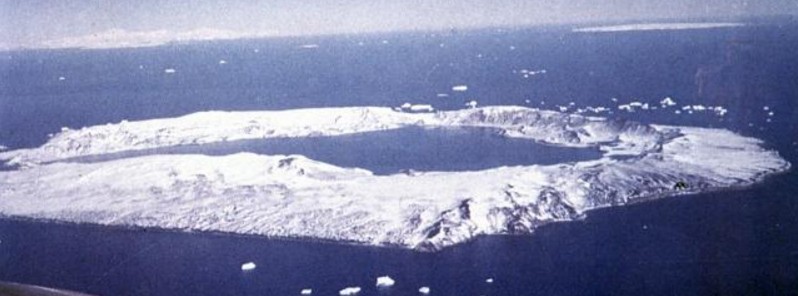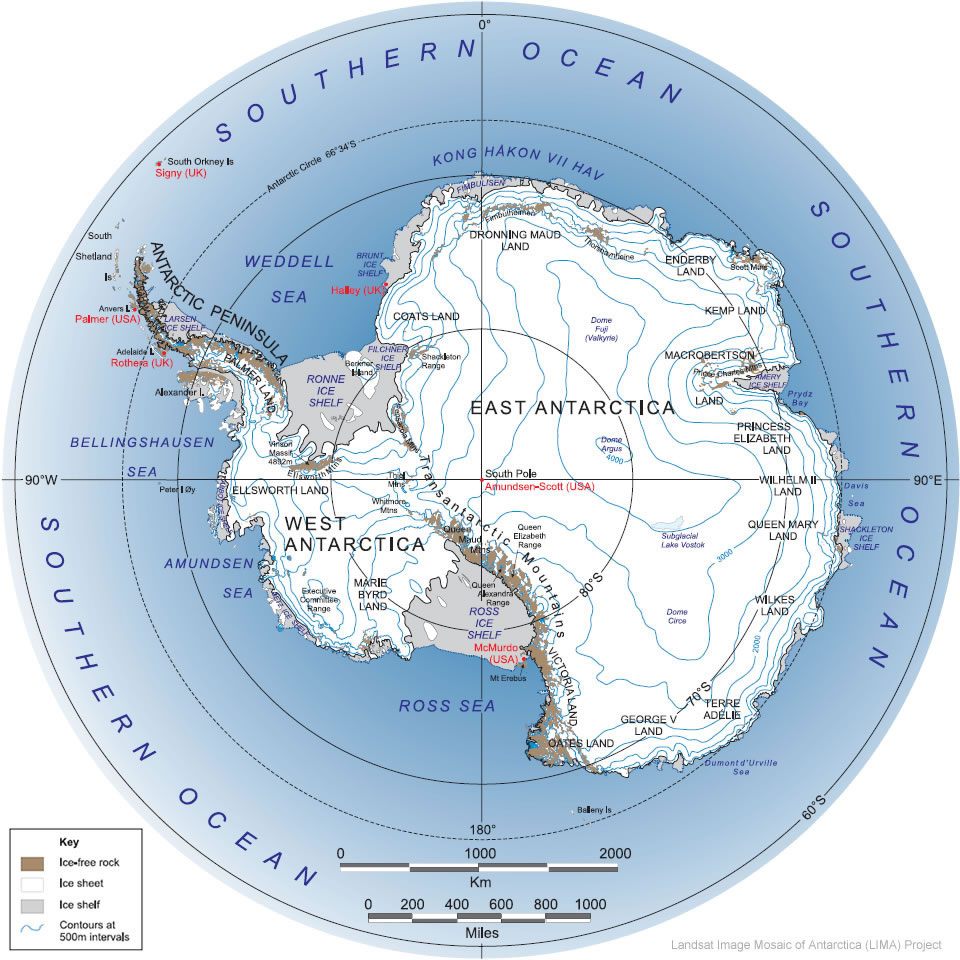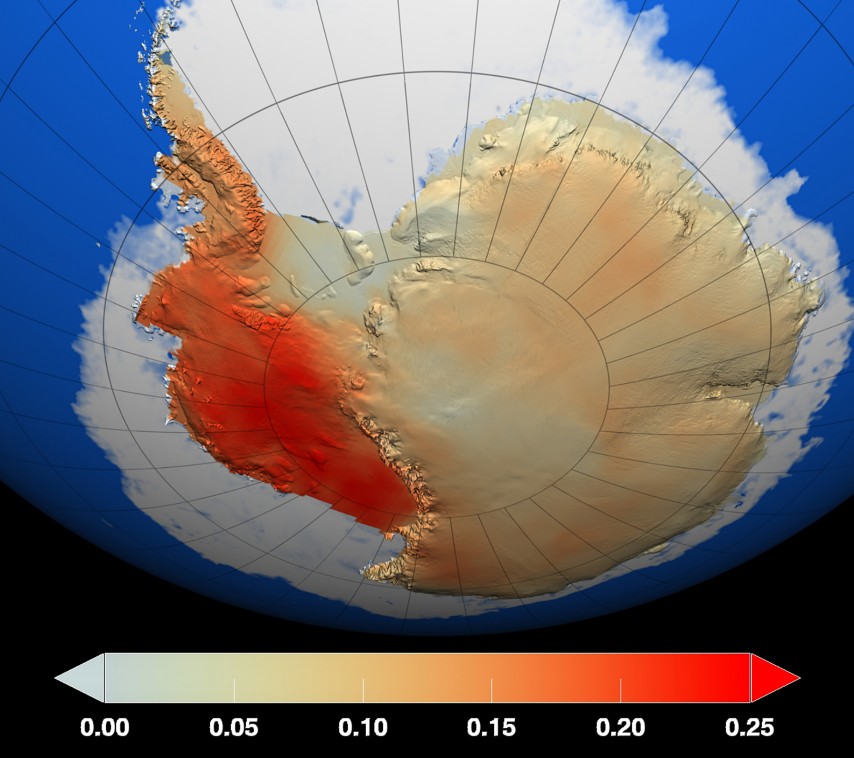Scientists uncover largest volcanic region on Earth under West Antarctica

A remote survey suggested by third-year university student discovered 91 volcanoes in a massive region known as the West Antarctic Rift System. The volcanoes range in height from 100 m to 3 850 m (328 to 12 631 feet).
A study conceived by a third-year student at the University of Edinburgh's School of GeoSciences, Max Van Wyk de Vries, has revealed that West Antarctica’s vast ice sheet conceals almost 100 newly discovered volcanoes. Max came up with the idea by analyzing publically available radar mapping data of Antarctica.
He proposed his study to researchers in the School, who were impressed by the quality of Max’s work and used their expertise to verify the presence of the volcanoes.
Geologists and ice experts say the range has many similarities to East Africa’s volcanic ridge, which is currently acknowledged to be the densest concentration of volcanoes in the world.
They analyzed the shape of the land beneath the ice using measurements from ice-penetrating radar, and compared the findings with satellite and database records, as well as geological information from aerial surveys.
As a result, they found 91 previously unknown volcanoes, ranging in height from 100 m to 3 850 m (328 to 12 631 feet).
The peaks are concentrated in a region known as the West Antarctic Rift System, spanning 3 500 km (2 147 miles) from Antarctica’s Ross Ice Shelf to the Antarctic Peninsula.
"Antarctica remains among the least studied areas of the globe, and as a young scientist, I was excited to learn about something new and not well understood. After examining existing data on West Antarctica, I began discovering traces of volcanism. Naturally, I looked into it further, which led to this discovery of almost 100 volcanoes under the ice sheet," de Vries said.
Results from the study, which is the first of its kind, will help scientists understand how volcanoes can influence long-term fluctuations in the ice sheet. They could also help improve understanding of how the continent has changed during past climates.
The team's results do not indicate whether the volcanoes are active, but should inform ongoing research into seismic monitoring in the area.

Image credit: Landsat, Image Mosaic of Antarctica (LIMA) Project.
It is interesting to note, that a study published in 2014 in the Proceedings of the National Academy of Sciences found that Thwaites Glacier, the large, rapidly changing outlet of the West Antarctic Ice Sheet located in the Amundsen Sea, is not only being eroded by the ocean, it's being melted from below by geothermal heat.
The study suggested that the cause of the heat is the movement of magma and associated volcanic activity arising from the rifting of the Earth's crust beneath the West Antarctic Ice Sheet.
The findings significantly changed the understanding of conditions beneath the West Antarctic Ice Sheet where accurate information has previously been unobtainable.
In 2009, Eric Steig, a climate researcher at the University of Washington in Seattle, used a novel combination of historical temperature data from ground-based weather stations and more recent data from satellites and reconstructed a 50-year history of surface temperatures across Antarctica.

Red represents areas where temperatures have increased the most during the last 50 years, particularly in West Antarctica, while dark blue represents areas with a lesser degree of warming. Temperature changes are measured in degrees Celsius. Image credit: NASA/GSFC Scientific Visualization Studio
As reported by NASA in 2009, his analysis shows that Antarctic surface temperatures increased an average of 0.12 °C (0.22 °F) per decade between 1957 and 2006. That's a rise of more than 0.5 °C (1 °F) in the last half century. West Antarctica warmed at a higher rate, rising 0.17 °C (0.31 °F) per decade.
The results of Steig's study were published January 22, 2009 in Nature. They confirm earlier findings based on limited weather station data and ice cores.
Learn more:
Researchers find surprisingly high geothermal heating beneath West Antarctic Ice Sheet
West Antarctic Ice Sheet breaking apart from the inside out
Featured image: Ring-shaped Deception Island, one of Antarctica's most well-known volcanoes, contains a 7-km-wide caldera flooded by the sea. A narrow passageway named Neptunes Bellows (left) cuts through the caldera wall and provides entrance to a natural harbor that was utilized as an Antarctic whaling station. Numerous vents located along caldera ring fractures circling the low, 14-km-wide island have been active during historical time. Photo by Juan Bastias (published in González-Ferrán, 1995).

Whenever NASA or the fake govt.s tells us they just discovered something, like these new volcanoes,it means they are just now releasing something that they have discovered a long time ago.This is why so much fuss has been going on down there. there is on average 35 volcanoes eruption daily basis. those 100 volcanoes will likely go off as well and all coast lines of the world will flood next year.100 million lives will be lost world wide hust from this and billion lives could be lost from all the Earth changes as the earth cleanses itself, all caused by the Nibiru close flyby next month.
The Earth that we know now will not be the same, hence the New Earth will be born out of the old and it will be another 3000 plus years before will be back but it will not be so close as this one for it is a 12,000 year cycle and the Old Earth shall pass away. There is a possibility that Mother Earth will not make the change, so prepare to be beamed up or go into the inner earth, better yet, its time to Ascend, we are all one !